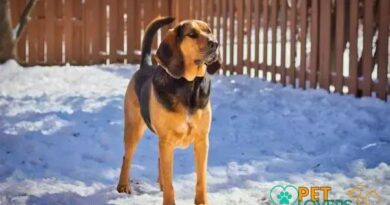What is Yard hazards for dogs
What Are Yard Hazards for Dogs?
Yard hazards for dogs refer to various dangers present in outdoor spaces that can pose risks to the health and safety of our canine companions. These hazards can range from toxic plants to sharp objects, and understanding them is crucial for responsible pet ownership. By identifying and mitigating these risks, dog owners can create a safer environment for their furry friends to explore and enjoy.
Toxic Plants and Foliage
One of the most significant yard hazards for dogs includes toxic plants and foliage. Many common garden plants, such as azaleas, lilies, and oleander, can be harmful or even fatal if ingested by dogs. It’s essential for pet owners to research and identify any potentially toxic plants in their yards and consider replacing them with dog-friendly alternatives. Regularly monitoring your dog’s behavior while they are outside can also help prevent accidental ingestion of harmful vegetation.
Sharp Objects and Debris
Another prevalent hazard in yards is the presence of sharp objects and debris. Items like broken glass, metal scraps, and sharp stones can cause cuts and injuries to a dog’s paws or other body parts. Regular yard maintenance, including cleaning up any debris and ensuring that the area is free of hazardous materials, is vital to keeping your dog safe. Additionally, providing a designated play area with soft surfaces can help minimize the risk of injury.
Pesticides and Chemicals
The use of pesticides and chemicals in the yard is another significant concern for dog owners. Many of these substances can be toxic to dogs if ingested or if they come into contact with their skin. It’s crucial to choose pet-safe alternatives for pest control and to follow all safety guidelines when applying any chemicals in your yard. Keeping your dog away from treated areas until it is safe can help prevent accidental exposure.
Fencing and Enclosures
Improperly secured fencing and enclosures can pose a significant risk to dogs. A weak or damaged fence can allow dogs to escape, leading to potential dangers such as traffic accidents or encounters with aggressive animals. Regularly inspecting and maintaining your yard’s fencing is essential to ensure that it is secure and safe. Additionally, consider using double gates or secure latches to prevent accidental escapes.
Water Hazards
Water hazards, such as pools, ponds, or even large puddles, can be dangerous for dogs, especially if they are not strong swimmers. Drowning is a real risk, and pet owners should take precautions to ensure their dogs are safe around water. Installing barriers around pools and supervising dogs when they are near water can help prevent accidents. Teaching your dog to swim and providing flotation devices can also enhance their safety in aquatic environments.
Insects and Wildlife
Insects and wildlife can also pose yard hazards for dogs. Bites from insects like bees, wasps, or ticks can lead to allergic reactions or transmit diseases. Additionally, encounters with wild animals such as raccoons or skunks can result in injuries or the spread of parasites. Keeping your yard well-maintained and free of standing water can help reduce insect populations, while securing trash and pet food can deter wildlife from entering your space.
Heat and Sun Exposure
Excessive heat and sun exposure are critical yard hazards for dogs, particularly during the summer months. Dogs can suffer from heatstroke or sunburn if they are left outside for extended periods without shade or water. Providing shaded areas, fresh water, and limiting outdoor time during peak heat hours can help protect your dog from these dangers. Additionally, recognizing the signs of overheating is essential for prompt intervention.
Outdoor Equipment and Tools
Outdoor equipment and tools can also present hazards for dogs. Items such as lawnmowers, gardening tools, and power equipment can cause injuries if not stored properly. Ensuring that all tools are put away after use and teaching your dog to stay away from work areas can help prevent accidents. It’s important to create a safe and organized outdoor space where dogs can roam freely without the risk of injury from equipment.
Conclusion
By being aware of these yard hazards for dogs and taking proactive measures to eliminate or mitigate them, pet owners can create a safer outdoor environment for their furry friends. Regular inspections, maintenance, and education about potential risks are essential components of responsible dog ownership. Keeping your dog safe in the yard not only protects their health but also enhances their overall quality of life.




